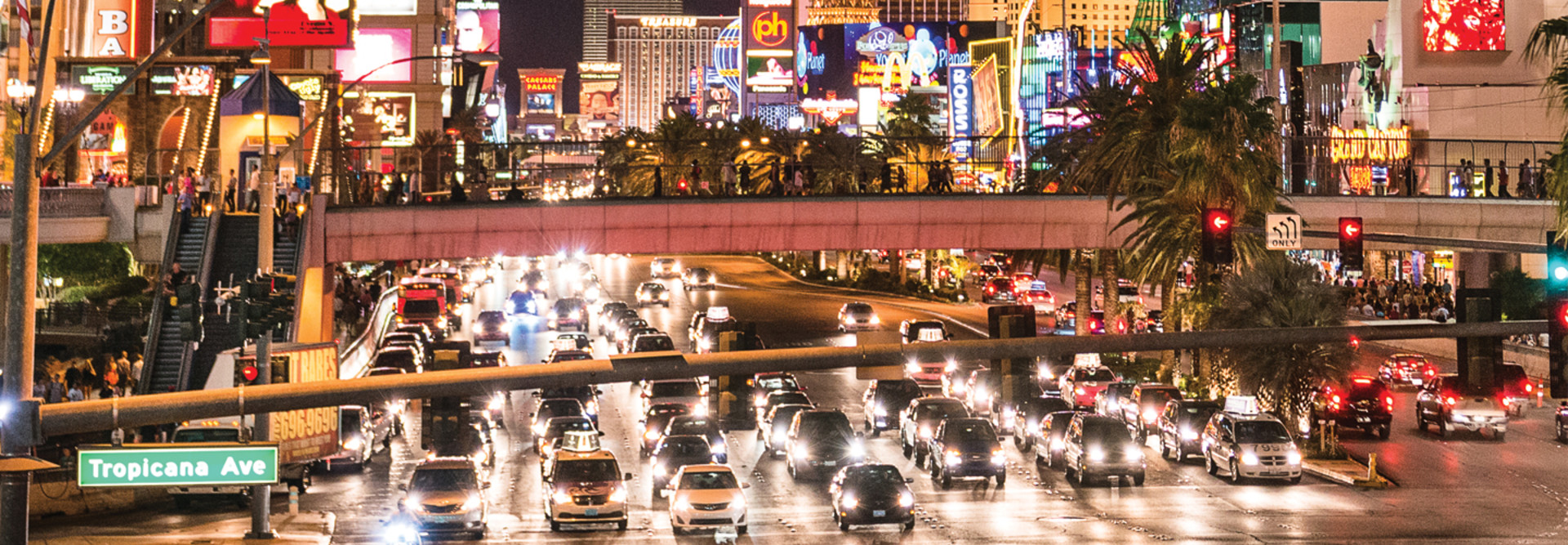Las Vegas Tests New Sensors to Make One-Way Streets Safer
How many cars per week drive the wrong way in downtown Las Vegas? One or two, or maybe even 10? Try 30 to 40.
The city recently installed an Internet of Things sensing system to determine traffic patterns and to measure how many cars were driving the wrong way. It discovered there were a lot more than anyone had expected. The small pilot is designed to determine how collecting and analyzing traffic data can inform traffic safety and improve outcomes for drivers and pedestrians.
“It was 30 to 40 cars per week, going the wrong way,” Michael Sherwood, director of innovation and technology for Las Vegas, tells Government Technology.
After seeing the number of cars driving the wrong way, the city put new signage in place to determine whether that might change drivers’ behavior. That cut the number of wrong-way drivers, but not as much as “we would have liked to have seen,” Sherwood says. “But it was a reduction.”
Las Vegas has been partnering with NTT, a Japanese telecommunications and technology firm, as well as Dell, on the project. Las Vegas and NTT first started working together in late 2018.
Las Vegas Aims to Improve Traffic Safety with Edge Computing
As StateScoop reports, Las Vegas is “testing new infrared cameras and lidar-based sensors that track movement without identifying individuals behind the wheel or walking and pedaling down the street.”
If the city knew how many accidents were occurring, it could potentially change signage and other measures to boost safety, Sherwood tells StateScoop.
NTT’s sensors can detect not just collisions but also near misses, using lidar, a laser-based system that measures distance and is often used in autonomous vehicle tests.
“What we’ve found out is while we didn’t have a lot of accidents on a [one-way] street, we did have a lot of people going the wrong way,” Sherwood says.
When accidents happen on one-way streets, there is a tendency for city government to want to make a quick fix, Sherwood tells Government Technology. However, that street might not have had a lot of one-way drivers, and other streets might have had a lot more near misses. “So, we’re using edge analytics now to monitor one-way traffic,” says Sherwood.
The NTT sensors, which also collect audio information to help determine cars’ locations, use Dell’s edge computing software to compute the data at the network edge, on the sensor. The city then collects metadata from the sensors and stores it in a central database.
“Instead of sending all the data back to a core, trying to analyze it and send something back, even though that might take milliseconds, it really is not helpful if you’re trying to change a light from green to red based on a condition,” Sherwood tells StateScoop. Edge computing allows the city to make faster decisions and improve traffic safety in real time.
Edge computing can also help Las Vegas push forward with autonomous vehicles. “By having all the data at the edge, now we’re able to start some groundbreaking work, we believe,” Sherwood tells Government Technology. “And so how can we now transmit that to an autonomous vehicle, so that now the vehicle has the information before it even gets to the intersection?”









